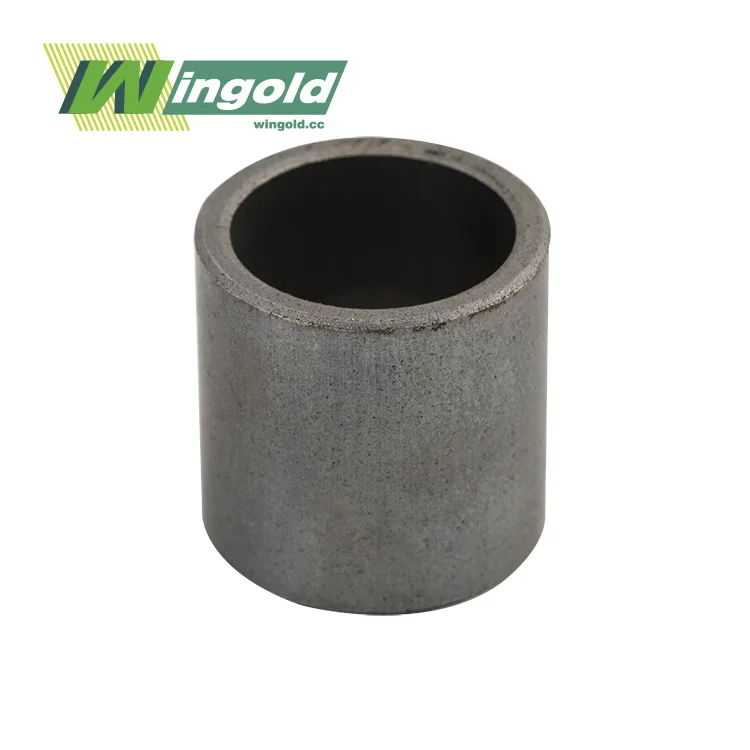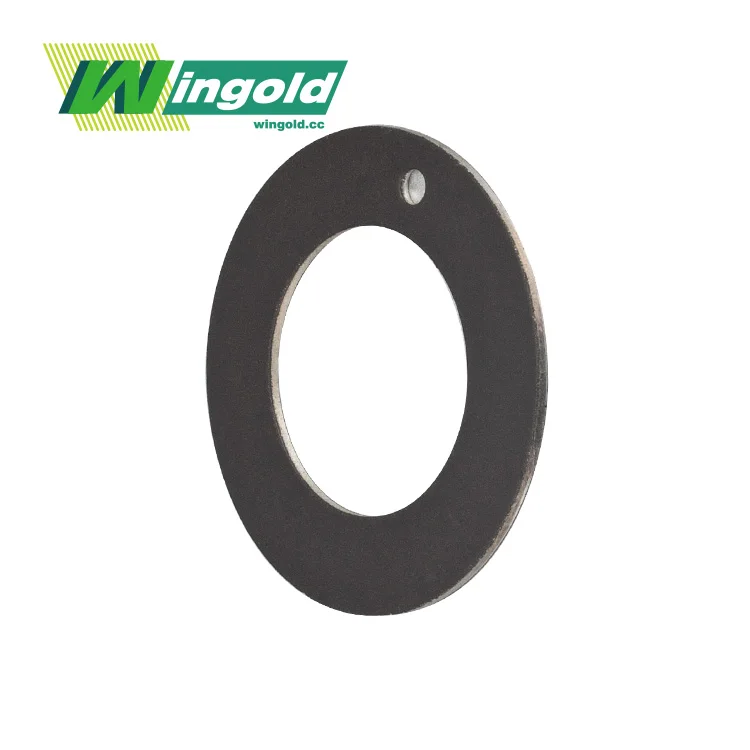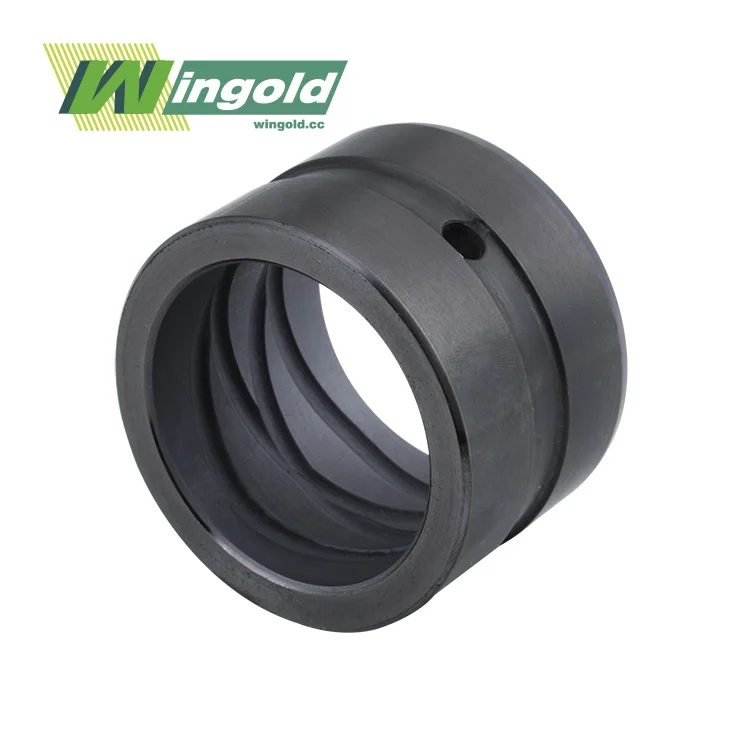The Science Behind PTFE Coated Washers and Vibration Reduction
PTFE coated washers are engineered to excel in vibration reduction through a combination of material properties and clever design. The foundation of these washers is typically a robust metal substrate, such as stainless steel or bronze, which provides structural integrity and load-bearing capacity. This metal base is then coated with a thin layer of PTFE, a synthetic fluoropolymer known for its exceptional lubricating properties.
The PTFE coating, ranging from 0.01 to 0.03 mm in thickness, creates a low-friction surface that significantly reduces the coefficient of friction between mating components. This reduction in friction is key to dampening vibrations, as it minimizes the transfer of energy between moving parts. The smooth, non-stick surface of PTFE also prevents the buildup of debris and contaminants that could otherwise contribute to increased vibration and wear.
Material Composition and Its Impact on Performance
The effectiveness of PTFE coated washers in vibration reduction is largely attributed to their unique material composition. The metal substrate, typically stainless steel or bronze, provides the necessary strength and rigidity to withstand mechanical loads. This substrate acts as a solid foundation, ensuring that the washer maintains its shape and function under pressure.
The PTFE coating, on the other hand, brings a host of beneficial properties to the table. PTFE is known for its:
- Low coefficient of friction (0.02-0.10)
- Chemical inertness
- Wide temperature range tolerance (-200°C to +260°C)
- Self-lubricating properties
Mechanisms of Vibration Dampening
PTFE coated washers dampen vibrations through several mechanisms:
- Friction Reduction: The low-friction PTFE surface minimizes the transfer of vibrational energy between components.
- Energy Absorption: The slight compressibility of the PTFE coating allows it to absorb some of the vibrational energy.
- Load Distribution: The washer's design helps to distribute loads evenly, reducing stress concentrations that can amplify vibrations.
- Surface Smoothing: The PTFE coating fills in microscopic surface irregularities, creating a smoother interface that is less prone to vibration-inducing friction.
Applications of PTFE Coated Washers in Vibration-Sensitive Industries
PTFE coated washers have found widespread use across numerous industries where vibration reduction is critical. Their unique properties make them invaluable in applications ranging from precision machinery to heavy-duty industrial equipment.
Automotive Industry
In the automotive sector, PTFE coated washers are utilized in various components to reduce noise, vibration, and harshness (NVH). They are commonly found in:
- Engine mounts
- Suspension systems
- Steering assemblies
- Transmission components
Aerospace and Aviation
The aerospace industry relies heavily on PTFE coated washers to ensure the safety and reliability of aircraft. These washers are used in:
- Engine assemblies
- Landing gear systems
- Control surface mechanisms
- Cabin interior fittings
Industrial Machinery
In industrial settings, PTFE coated washers play a crucial role in improving the performance and longevity of heavy machinery. They are commonly used in:
- Hydraulic and pneumatic systems
- Conveyor belt assemblies
- Robotic arm joints
- Packaging equipment
Optimizing Mechanical Assembly Design with PTFE Coated Washers
Incorporating PTFE coated washers into mechanical assembly designs requires careful consideration of various factors to maximize their vibration-reduction benefits. Engineers and designers must take into account the specific requirements of their application to select the most appropriate washer specifications.
Design Considerations
When integrating PTFE coated washers into a mechanical assembly, several key design aspects should be considered:
- Load Requirements: Determine the maximum load the washer will need to withstand and select an appropriate substrate material and thickness.
- Operating Environment: Consider factors such as temperature range, chemical exposure, and humidity to ensure the washer will perform optimally in its intended environment.
- Mating Surface Materials: Choose PTFE coated washers that are compatible with the materials of the mating surfaces to prevent galvanic corrosion and ensure optimal performance.
- Assembly Tolerances: Account for the thickness of the PTFE coating when designing for tight tolerances in the assembly.
- Vibration Frequency: Consider the frequency and amplitude of the vibrations the assembly will experience to select washers with appropriate dampening characteristics.
Installation Best Practices
Proper installation of PTFE coated washers is crucial to ensuring their effectiveness in vibration reduction. Some best practices include:
- Clean Surfaces: Ensure that all mating surfaces are clean and free from debris before installation.
- Correct Orientation: Install washers in the correct orientation as specified by the manufacturer to maximize their performance.
- Proper Torque: Apply the recommended torque when tightening fasteners to avoid damaging the PTFE coating or compromising the washer's function.
- Even Distribution: Use multiple washers evenly distributed across the assembly when possible to optimize vibration dampening.
- Regular Inspection: Implement a maintenance schedule that includes regular inspection of PTFE coated washers to ensure they remain in good condition.
Maintenance and Longevity
While PTFE coated washers are designed for long-term performance with minimal maintenance, proper care can further extend their lifespan and maintain their vibration-dampening effectiveness. Some maintenance considerations include:
- Periodic Cleaning: Gently clean the washers to remove any accumulated debris that could impact their performance.
- Visual Inspections: Regularly inspect washers for signs of wear, deformation, or coating damage.
- Replacement Schedule: Develop a proactive replacement schedule based on the specific application and operating conditions to ensure optimal performance.
- Environmental Protection: Where possible, shield assemblies containing PTFE coated washers from extreme environmental conditions to prolong their life.
Conclusion
PTFE coated washers represent a significant advancement in vibration reduction technology for mechanical assemblies. Their unique combination of a durable metal substrate and a low-friction PTFE coating makes them invaluable in a wide range of applications across various industries. By carefully considering design factors, following proper installation practices, and implementing appropriate maintenance procedures, engineers and designers can harness the full potential of these innovative components to create quieter, more efficient, and longer-lasting mechanical systems.
As industries continue to demand higher performance and reliability from their equipment, the role of PTFE coated washers in vibration reduction is likely to grow. Their ability to enhance the overall functionality and longevity of mechanical assemblies makes them a crucial component in the ongoing evolution of engineering design. For more information on how PTFE coated washers can benefit your specific application or to discuss custom solutions, please contact us at info@wingold.cc.
FAQ
What is the typical lifespan of a PTFE coated washer?
The lifespan of a PTFE coated washer varies depending on the application and operating conditions. Under normal use, they can last several years or even decades.
Can PTFE coated washers be used in high-temperature environments?
Yes, PTFE coated washers can withstand temperatures ranging from -200°C to +260°C, making them suitable for many high-temperature applications.
Are PTFE coated washers electrically conductive?
PTFE itself is not electrically conductive. However, the metal substrate can provide conductivity if required for specific applications.
Can PTFE coated washers be custom-made for specific applications?
Yes, many manufacturers offer custom PTFE coated washers tailored to specific size, material, and performance requirements.




